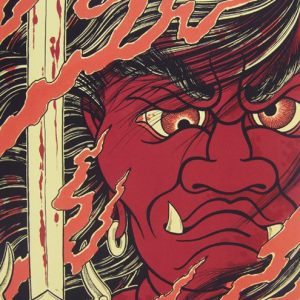Well I would say that I am, but in company with others, I agree this acknowledgement comes with a struggle. It’s not the British modesty bit, I do not boast about it…
It’s not the ‘I do something else to make money so it does not count…’
It’s not the ‘I’m not as technically proficient as artist X’
All these arguments I am familiar with. To my way of thinking these ideas do not stop you being an artist or even a crafts person. Here are some artist stereotypes that Fudo and I have looked recently:
The 19th century view of the artist (including poets) as a misunderstood, tortured genius, whose poverty was probably ‘good for them’
The all round eccentric doing their thing and ‘out of their time’ experimenter with colour or form or medium (probably excludes poets)
Over intellectual, mostly male and unconcerned with the mundaneness of life (probably includes poets).
Apart from the comments about poets, which I will return to later, the thing that strikes me about these stereotypes is that they are focussed on the single individual making money from the creative process. All artists need support in terms of a life to return to, personal relationships and even company or other pleasures when they are not working in their medium; not to mention regular meals and clothing etc.
How often in the lives of artists that you know is the (female) Muse providing some or all of these? So the struggle for money or the lack of it is not the defining factor in defining someone as an artist. Take Van Gogh*, who famously never sold a picture in his lifetime. Nor is the lack of other life. Aren’t there many of us who struggle with that ….
I think it is how the person or artist responds to their need for both parts of their life and how these parts interact with their environment. When I was at university, we did a whole module on the Poet and Place, but we mostly looked at how a place was reflected or captured in writing rather than the function of the environment in that writer’s creative life. Deborah Harvey’s Red Dress of Poetry* blog is a good example of one way. Anthony Gormley’s,
and Andy Goldsworthy’s* temporary installations in the natural environment are other ways. For me it is the skilful engagement with some aspect of the political, social or natural environment, in a way that is intended to speak to others, that makes someone an artist, not the skill or the lifestyle.
 This month I went to the Arnolfini’s Artists’ Book Fair and what a great educational time (Fudo and) I had. Several different aspects of the artists and place were there; poetry pamphlets on Soho in the sixties by Jo Reed* (we had a great reminisce),
This month I went to the Arnolfini’s Artists’ Book Fair and what a great educational time (Fudo and) I had. Several different aspects of the artists and place were there; poetry pamphlets on Soho in the sixties by Jo Reed* (we had a great reminisce),
a beautifully precise pop-up book on Brutalist architecture (what a great conjunction of content and form) and the book as art object prepared with skill and care – lovely
 So good to see, as the practical aspects of reading text become separated from the book as an object, how the artists’ creative responses grow.
So good to see, as the practical aspects of reading text become separated from the book as an object, how the artists’ creative responses grow.
Also interesting to see how the old fashioned lead typefaces, which are not available on line, have transmuted into art works in themselves; being sold letter by letter or used for hand printed ‘art’ *epigraphs. You can see the line between text and art sliding.
To return to the poets… are they artists? I think they are often excluded and put in a category of ‘artistic’ or a craftsperson with words, rather than being given the full status of an artist. I think if you use my definition above then yes, yes they are artists. If you not agree then it’s your own dance with Red Fudo to design a definition that better suits.
So, satisfied in my own mind, that I am an artist I can describe a little of the artistic process this month. It has been a month of great change as I have left behind a performance piece which was planned around November and failed to make a venue till the end of May. My artistic partner and I did not keep our eye out for other venues and in the end it wasn’t really suitable. It is strange to me that in that long waiting process I had thought my enthusiasm for embodying a Voudoun Goddess had not diminished… and it hadn’t – but I had learned, by planning the performance, most of what I needed to learn by doing the performance. When I (and I suspect other artists) prepare or make a piece of work we learn something about ourselves or our environment or even our relation to our environment.. It is this learning that helps us know when a piece is finished or part of a series. The learning does not happen in a fixed, recognizable sequence.
had not diminished… and it hadn’t – but I had learned, by planning the performance, most of what I needed to learn by doing the performance. When I (and I suspect other artists) prepare or make a piece of work we learn something about ourselves or our environment or even our relation to our environment.. It is this learning that helps us know when a piece is finished or part of a series. The learning does not happen in a fixed, recognizable sequence.
I am hoping Red Fudo’s dances will teach me what is still mysterious to me.




